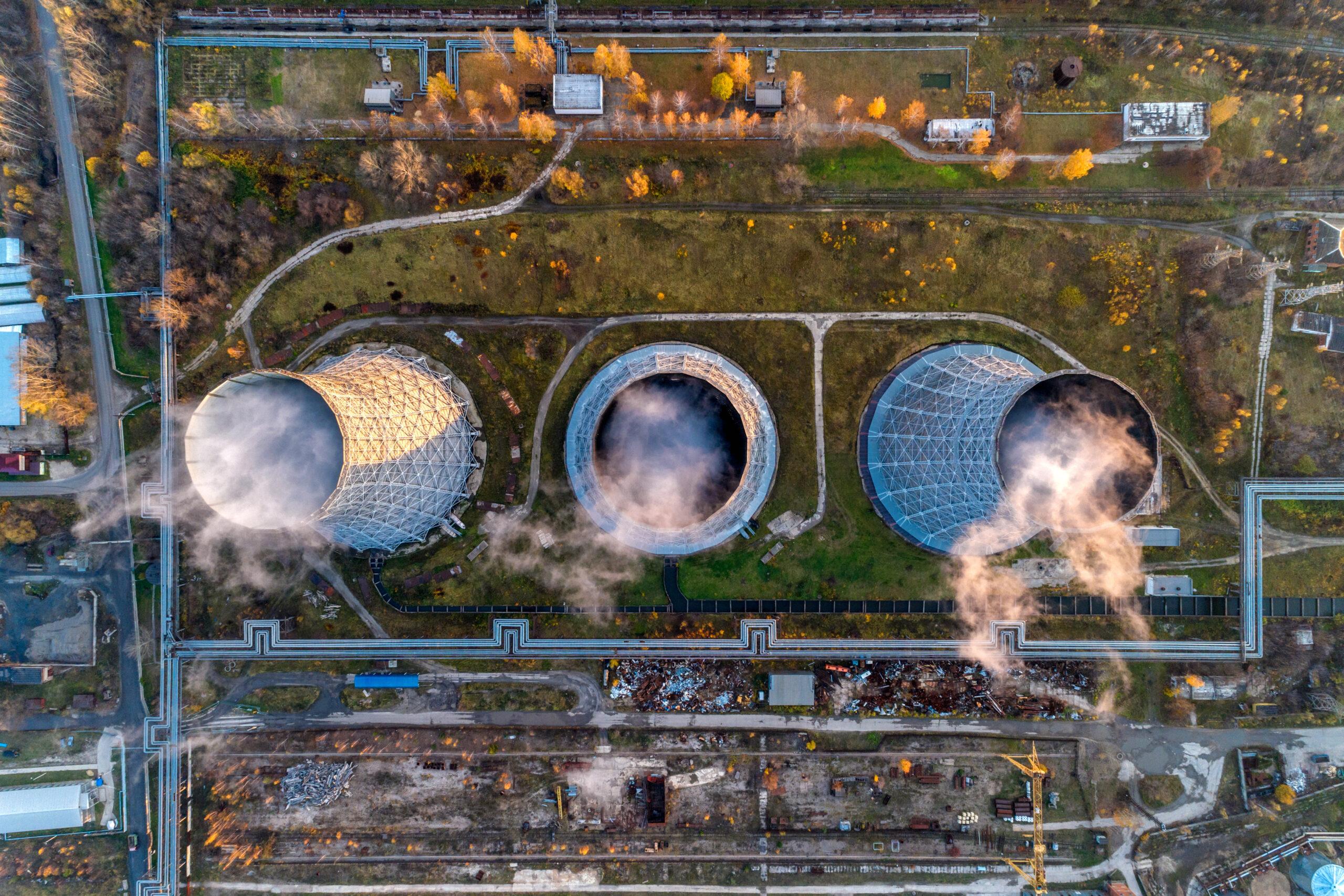
Waste from nuclear reactors (whose cooling towers are shown above) actually contains some valuable elements. Among many other purification tasks, metal organic frameworks show promise in extracting valuable xenon gas from nuclear waste.
PHAST 2.0 Force Field, Developed with Bridges-2, Improves Sims for Design of New Materials for Recovering Useful Chemicals
Important tasks like water desalination, dehumidification, and nuclear waste processing all involve expensive separation steps. A team from North Carolina State University used PSC’s NSF-funded Bridges-2 to develop a computer simulation force field that greatly simplifies the creation of metal-organic frameworks to separate substances. Their proof-of-concept work for their PHAST 2.0 force field holds the promise of less expensive, more efficient separation of waste products from useful chemicals.
WHY IT’S IMPORTANT
Across the country, and the world, we need to separate things we want from things we don’t. We need to take the salt out of seawater, so we can drink it. We need to take water vapor out of air to make spaces both more comfortable and less corrosive to metal and electronics. We need to separate radioactive krypton gas from nuclear waste, but keep the valuable xenon gas. And today’s methods of separation tend to be difficult and expensive. Separations account for 10 to 15 percent of the world’s energy use.
Brian Space, associate head of the Department of Chemistry at the North Carolina State University, and his team have focused on a promising set of materials called metal-organic frameworks (MOFs). These mesh-like substances made of carbon atoms and metals allow gases or liquids to pass through. But attaching different chemical groups to them can allow a substance we want to recover to stick to the framework as the raw material passes through. With the right chemistry, this stickiness can be reversed, so we can recover what the MOF captured.
“[For example] you want something that captures water fairly selectively, which is not that hard to do, because water is stickier than most things, right? But it’s very hard to find a material that’s in the Goldilocks spot that captures it, but also releases it without a huge energy penalty … And that seems very possible [with MOFs]. It’s just a matter of research and development at this point, and then some engineering. But we’re not that far away.”
— Brian Space, NC State
To avoid a lot of wasteful trial and error in designing and refining MOFs for different purposes, Space’s group depends a lot on computer simulation of candidate MOF behavior. Over the years, their tools of choice for the work have been PSC’s flagship supercomputers. Most recently, they used Bridges-2, via an allocation from ACCESS, the NSF’s national network of high performance computing sites.
HOW PSC HELPED
Space’s work involves a kind of ping-pong match between computation and the laboratory. The computer predicts how a material will behave in the real world. The scientists then test it under those conditions. Where the predictions are off, they return to the computer, refining the simulation so that it performs better. It makes more predictions, which the team then tests again.
To avoid the accurate but time-costly route of simulating each electron in the material separately, the team uses what’s known as a force field. You take a relatively small part of the substance and count the forces acting on it by the rest of the substance as a force field — like in a science fiction story. It’s there as a combined effect instead of as individual atoms. This simplifies and speeds the computation.
The problem is that a force field is only as useful as its accuracy. And over many years chemists had come to realize that the Lennard-Jones equation, which had provided reasonably good results with earlier biomedical simulations, broke down at the scale necessary to give good simulations of MOF behavior.
Adam Hogan, a postdoctoral fellow working in Space’s lab, wanted to bring a new force field developed by the group, PHAST, to the next level. PHAST, and Hogan’s improved PHAST 2.0, use an AI approach grounded by physics. First, the scientists trained the AI on a set of 40 molecules whose behavior had previously been published by a number of other scientists. By giving the AI the “right answers,” they could help it improve its predictions by trial and error, strengthening the connections between the data points that produced good predictions and weakening those that didn’t. Then they tested it on another set of molecules without the answers labeled, to see if its estimates remained accurate.
“The amount of computation that you have to do these days, or that you can do, is unbelievable. Right? So the training set is 40 molecules. But also, there are huge cross interactions between all these things … we couldn’t do it without high performance computing. The force field development, force field testing, validation, and all the periodic electronic structure calculations … are done on high performance computers like Bridges. So we do rely on it almost entirely.”
— Brian Space, NC State
Bridges-2 was ideal for the work. Though the training set was only 40 molecules, the testing set involved hundreds of thousands of interactions. Bridges-2’s combination of training-friendly graphics processing units (GPUs) and thousands of number-crunching central processing units (CPUs) gave the Raleigh scientists the ability to refine many thousands of chemical behaviors into a single force field that reproduced their effects reliably. The team published their initial results with PHAST 2.0 in the Journal of Chemical Theory and Computation in May 2025.
Space’s grad student Matthew Mostrom, working with Hogan, then developed PHAST-MBD, applying PHAST 2.0 to a many-body dispersion simulation that reproduced in the computer a candidate MOF’s ability to separate krypton from xenon gases. PHAST-MBD was able to predict the real-world behavior of the MOF much better than previous methods. The team reported this success in the Journal of Chemical Theory and Computation in June 2025.
The krypton/xenon simulation was only the group’s first test of PHAST 2.0 against real-world MOF behavior. It’s an encouraging proof of concept that PHAST will improve simulations compared with the previous methods. Space plans a series of increasingly difficult simulations to further improve PHAST 2.0’s accuracy, as well as its applicability to a wide range of chemical separation tasks.
